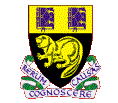| School | Troops | Resources |
The London School of Economics

[Note: Part of the HET Website. This site is not related to or endorsed by the London School of Economics or any other organization. See the official L.S.E. website]
The London School of Economics and Political Science (known everywhere by its "L.S.E." acronym) was set up as in 1895 by Sidney J. Webb and Beatrice Potter Webb. In 1900, it became one of the colleges of the University of London system. The quixotic philosopher Bertrand Russell gave his considerable inheritance to help fund the L.S.E.
Despite being founded by Fabian socialists, its early appointments were more conservative: W.A.S. Hewins (later a Tory MP) was its first director, the outspoken and staunchly Neoclassical economist, Edwin Cannan, was to head the economics department, the technocratic Arthur L. Bowley headed statistics and liberal theorists L.T. Hobhouse headed sociology. However, the Fabian roots of the school were well-represented in the appointments of more radical scholars such as Graham Wallas, R.H. Tawney, Lord Beveridge, Harold Laski and Hugh Dalton.
The L.S.E. from the very beginning aimed at being an academic teaching-and-research powerhouse. It was one of the group of "new universities" founded at the turn of century which eschewed the Oxbridge-Ivy League "gentlemanly education" approach in favor of a more serious academic and technical approach, akin to the Central European model. Like other "new universities", the L.S.E. was keen on raising its profile via academic research. They shocked the old Oxbridge system by creating departments that were hitherto unheard of, like anthropology (under Malinowski) and sociology (under Hobhouse), and by splitting economics into separate "pure economics" and "economic history" components. In arriviste fashion, the L.S.E encouraged the formation of professional associations and journals -- in economics alone, the L.S.E. brought forth Economica in 1921 the Economic History Review in 1927 and the Review of Economic Studies in 1933.
Edwin Cannan served from 1895 to 1926, after which Allyn A.Young took over. Young, however, died rather suddenly in 1929 and was succeeded by the thirty-year old Lionel Robbins, a young economist much influenced by the work of Philip H.Wicksteed and the Austrian School of economics. The remarkable Robbins saw the L.S.E. as an instrument by which to break the orthodox Marshallian hold over English economics. Under Robbins, continental economic theory (Walrasian, Austrian and Swedish) began to finally infiltrate the Anglo-Saxon world. Robbins himself announced the arrival of this "new" economics in his famous Essay on the Nature and Significance of Economic Science (1932) expounding the methodology of radical Neoclassical theory.
The Robbins years were glory years for the L.S.E. It produced a remarkable group of economists, notably John Hicks, Paul Sweezy, Roy G.D. Allen, Abba Lerner, Nicholas Kaldor, George Shackle, Ursula (Webb) Hicks and Tibor Scitovsky in the 1930s, all of whom went on to stretch and change economic theory in a significant manner. One of their notable efforts was the resurrection of Paretian general equilibrium theory and the forging of the "New Welfare Economics" in this period. Much of this new activity was channeled into the Review of Economic Studies, a publication founded and run by L.S.E. graduate students.
One of Robbins' more daring moves was to bring the Austrian economist Friedrich A. Hayek to the L.S.E. in 1932 as the L.S.E's answer to Cambridge's young star, John Maynard Keynes. Hayek and Keynes locked horns over the theory of macrofluctuations in the early 1930s, and their rivalry placed the L.S.E. clearly on the map. However, the Keynesian Revolution did much to entice many of the younger members of L.S.E. away from the Robbins-Hayek sphere of influence. The fault for this "disloyalty" lay in good part with the intransigence of their elders: the deserting students, notably Kaldor, Lerner and Shackle, had made numerous attempts to forge the L.S.E. approach with the Keynesian, but Robbins and Hayek refused to entertain such a merger. Be that as it may, the L.S.E. heritage of these younger economists remained quite visible, even in their subsequent "Keynesian" work.
In later years, the L.S.E. continued to travel in its distinct path -- albeit it gradually arranged a modus vivendi with the Neo-Keynesian orthodoxy. Nonetheless, a "Continental" flavor maintained itself throughout, as we see in the work of later L.S.E. economists such as Harry G. Johnson, Michio Morishima, Frank H. Hahn, Helen Makower, Hla Myint, W. Arthur Lewis, Peter Bauer and Ronald H. Coase.
|
The Early (Fabian) Years
The Robbins Circle
Later L.S.E. Figures
|
HET
|
|
Resources on the L.S.E.
|
All rights reserved, Gonšalo L. Fonseca
